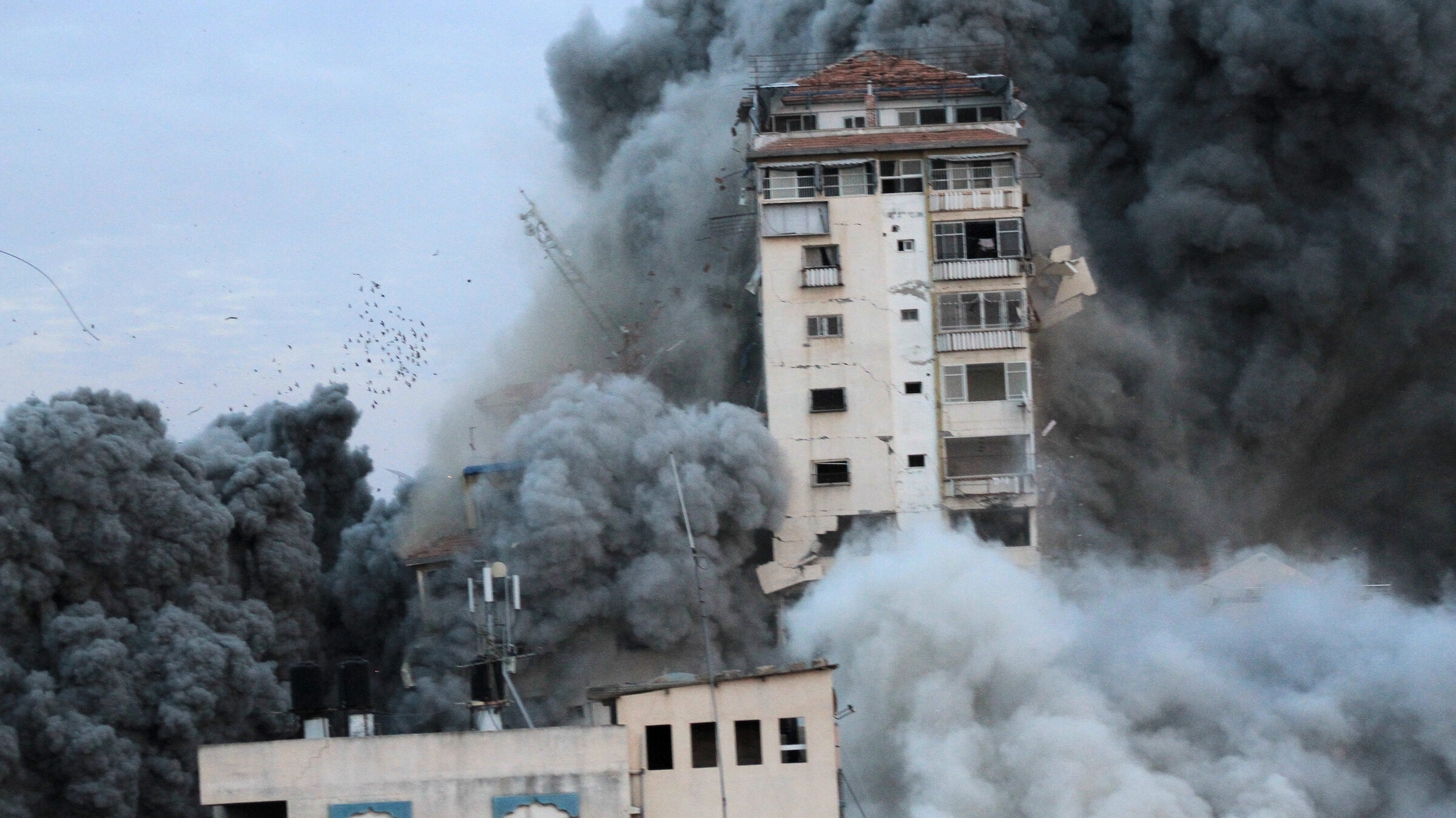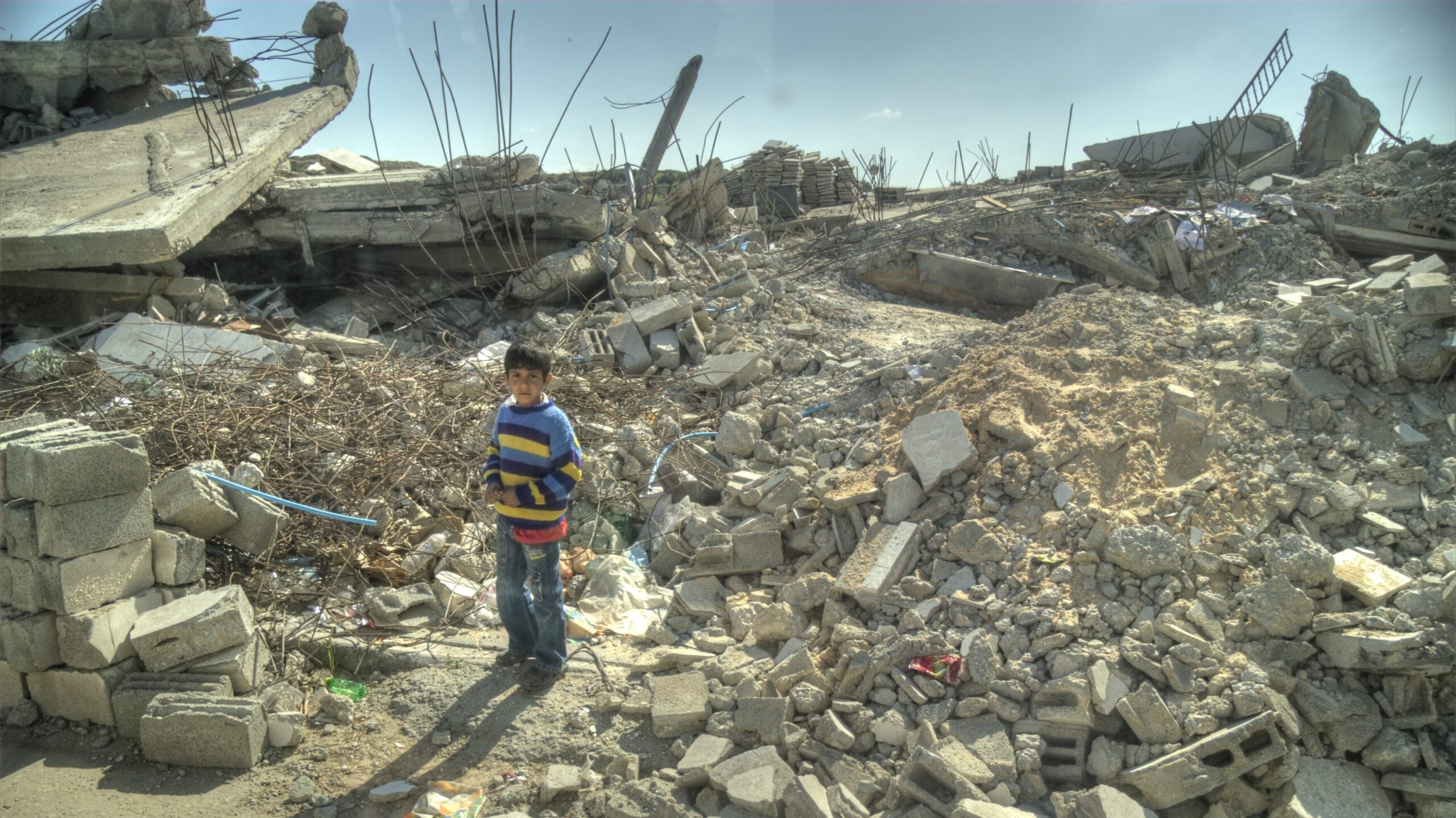On October 7, the Israeli-Palestinian conflict erupted in a new cycle of devastating violence that captured the world’s attention. More than 2,000 civilians, including 500 children and 276 women, lost their lives, and a ground offensive in Gaza in retaliation for Hamas attacks is feared. Israel has called for the evacuation of a million people in the north of the region, raising concerns about respect for international law. To add to the chaos, recent media coverage has been characterized by an overabundance of intellectual and historical shortcuts.
Recent attacks by Palestinian fighters have been described by the media as terrorism, as stemming from a religious conflict, as sudden. Yet their origins are far more complex and darker than these simplistic assertions suggest. It’s an issue that goes beyond mere religious differences, rooted in a history of colonization, dispossession and geopolitical and economic interests.
The roots of the conflict
Contrary to popular belief, Jews and Muslims have coexisted in relative peace for centuries in the Middle East. The conflict between Israel and Palestine is not an old religious quarrel, but rather a fundamentally political and economic one. It has its roots in the persecution of Jews in Europe, the intervention of foreign countries in the Middle East and the emergence of Zionism.
This ideology emerged in the 2nd half of the 19th century, and aimed to create a Jewish state in Palestine. Theodor Herzl, a Jewish leader from Vienna, played a key role, publishing a manifesto in 1896 and organizing a congress in Basel in 1897 to promote the idea. The movement encouraged the purchase of land in Palestine, marking the beginning of Jewish colonization in the region.

Zionism was not the only option for European Jews at the time. The secular Bundist movement advocated Jewish autonomy without separatism, the preservation of Ashkenazi culture and the organization of Jewish workers. Many European Jews also promoted integration into the cultures and societies of their countries of residence or immigration.
Around 25,000 Jews lived in Palestine at the turn of the 1880s, equal to 4% of the local population, when the country was still ruled by the Ottoman Empire. However, in the late 1880s and early 1900s, anti-Semitism in Europe prompted many Jews to leave the continent. At the start of the First World War, there were some 80,000 Jews in Palestine, equivalent to around 3% of the region’s population.
Conflict with the Ottoman Empire during the First World War led to concerns in England about losing access to crucial trade routes. To win the support of Arab and Jewish communities in the Middle East, the British issued two simultaneous promises. On the one hand, the Balfour Declaration called for the creation of a Jewish state in Palestine, and on the other, the British promised a unified Arab state headed by the Arab Sharif of Mecca. However, in 1916, France and England secretly signed the Sykes-Picot Agreement, which provided for the division of the region according to their economic interests, thus compromising the second promise.

Following the defeat of the Ottoman Empire in the First World War, England took control of the region of Israel and Palestine under the “Palestinian Mandate”. In 1922, the League of Nations, forerunner of the UN, incorporated the terms of the Balfour Declaration into an agreement, resulting in the arrival of 250,000 European Jewish refugees in Palestine under the influence of Zionism. Many preferred to emigrate to North America, mainly the United States (with 300,000 to 500,000 Jews), while Canada welcomed only 40,000 to 60,000, due to policies with anti-Semitic tendencies.
The British colonial period in Palestine was marked by tyrannical rule over the Palestinian Arabs, who were increasingly concerned by the massive influx of European Jews. The escalation of hostilities, overseen by the British, was provoked by the emergence of Jewish and Arab militias on Palestinian land as a result of this growing tension. Although often directed against the British, violence between Arabs and Jews was also widespread, with each group fighting to retain control of certain areas of the region.
In 1947, the United Nations adopted a partition plan to divide Palestine into two separate states, one for Jews and one for Palestinians, with Jerusalem under international control. This represented the perfect opportunity for the alliance led by Britain and the USA (and supported by Canada) to maintain their economic dominance in the Middle East, by setting up a state aligned with their interests, at the expense of the Arab populations who were fighting against their domination in the region.

However, implementation of the plan met with resistance from the Arab states and Palestinians, leading to a series of conflicts and wars. During this period, 750,000 Palestinians were displaced or expelled and their villages destroyed, triggering the Palestinian refugee crisis that continues to this day.
Ongoing occupation and apartheid
After the 1967 Six-Day War, Israel occupied the West Bank, Gaza Strip and East Jerusalem, an occupation that continues to this day. Israeli policies, such as the construction of settlements in occupied territory, the confiscation of Palestinian land and the building of the separation wall, have been strongly criticized for violating international law, in particular by the Fourth Geneva Convention.
The expansion of Israeli settlements and the violent military control exercised over the Palestinian territories have escalated tensions, provoking regular outbreaks of violence. These actions were compounded by Israel’s 2018 nation-state law, which stipulated that only Jews have the right to self-determination in the territory, stripped Arabic of official language status, and defined settlement expansion as a “national value”. This accumulation has raised concerns around the world, with Amnesty International and Human Rights Watch describing Israel’s policies as apartheid, in reference to the segregation and racial oppression that ended in South Africa in 1991.

A youth born of war
Seventeen years ago, Israel imposed a hermetic siege on the Gaza Strip, a measure that shaped the lives of an entire generation. This period proved long enough for young people to grow up under the weight of resistance and the struggle for freedom. According to Save The Children statistics, nearly half of the 2.3 million Palestinians living in the Gaza Strip today are children.
This cruel reality highlights the suffering endured by a young population that has never left this tiny 365-square-kilometer strip of land, smaller than the island of Montreal. This generation, born or raised since the establishment of the siege, has experienced at least five devastating major wars, during which children, their mothers, fathers, brothers and sisters became the main targets of the Israeli military.
Even peaceful attempts to protest against the injustice of the siege, through mass gatherings along the fence separating besieged Gaza from Israel, have been severely repressed. The mass demonstrations, known as the “Great March of Return”, were met with Israeli sniper fire. Harrowing images of teenagers carrying other wounded youngsters became a tragically common scene near the fence.
The result of this tragic story? On October 7, hundreds of fighters managed to cross the border from Gaza via four different entry points. These young Palestinians are the very people who have known nothing but war, siege and the need to protect each other, all because an alliance of great powers chose to favor one people over another. What’s happening now is not an Islamist attack, nor a sudden explosion of violence: it’s the overflow of a vase of history that couldn’t accumulate any more.

Be part of the conversation!
Only subscribers can comment. Subscribe to The North Star to join the conversation under our articles with our journalists and fellow community members. If you’re already subscribed, log in.